This page may contain affiliate links that allow us to make a small commission from qualifying purchases (at no extra cost to yourself). We appreciate your support.
Animals raised in captivity or that have been taken out of their natural habitat, are no longer able to instinctively know what plants are safe or not to eat. Your reptiles will attempt to eat or brush against any plants they have access to, even if they are dangerous. After much research, I have put together a list of toxic plants that you should make sure to keep away from your reptile.
Toxic plants to keep out of your reptile’s terrarium:
- Avocado (Persea americana)
- Azalea (Rhododendron)
- Bracken Fern (Pteridium)
- Castor bean (Ricinus communis)
- Dumb Cane (Dieffenbachia)
- Holiday Favorites (Holly, Mistletoe, Poinsettia)
- Jimsonweed (Datura stramonium)
- Lily (Lilium)
- Marijuana (Cannabis)
- Mushrooms (Fungi)
- Nightshade (Solanaceae)
- Oleander (Nerium oleander)
- Primrose (Primula vulgaris)
- Shamrock (Trifolium dubium)
- Yews (Taxus)
Within this article, I have included specific information on the suggested plants listed, including which parts of the plants are toxic, and common symptoms to look out for after contact. As a bonus, you will also find a compiled list of over 350 toxic plants that are commonly harmful for reptiles that I discovered through my research. I hope that through this article, you are one step closer to building a safe, comfortable home for your favorite pet!
If you are interested in a collection of plants that are safe for reptiles and their terrariums, see our article on safe plants for reptiles covering over 135 different options.
1. Avocado (Persea americana)
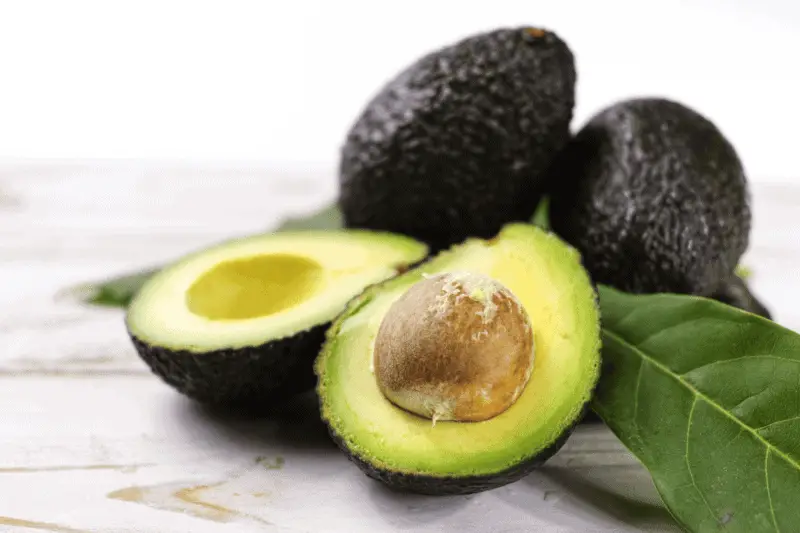
The main parts of an avocado tree that are toxic to reptiles are the fruit, the pith, and the stems. Common symptoms are diarrhea, vomiting, and labored breathing. An avocado tree may seem like an odd choice for a terrarium plant, but I decided to include it in the list for those who have reptiles that eat plants and fruits.
2. Azalea (Rhododendron)
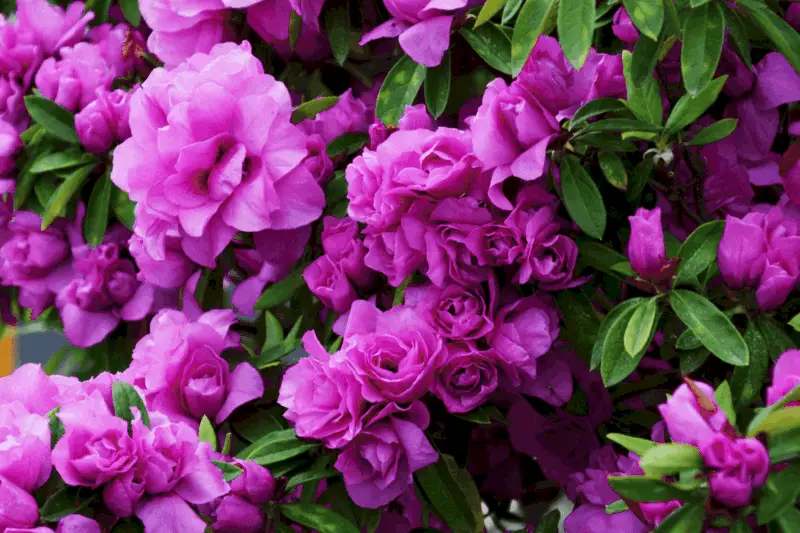
The Azalea plant is a flowering shrub with many different species of different colors. The entire plant is toxic and should be avoided. Azaleas contain andromedotoxins in both their leaves and nectar. Common symptoms after exposure are nausea, vomiting, depression, and difficulty breathing. Your reptile could even be put into a coma if the plant is ingested in larger quantities.
3. Bracken Fern (Pteridium)
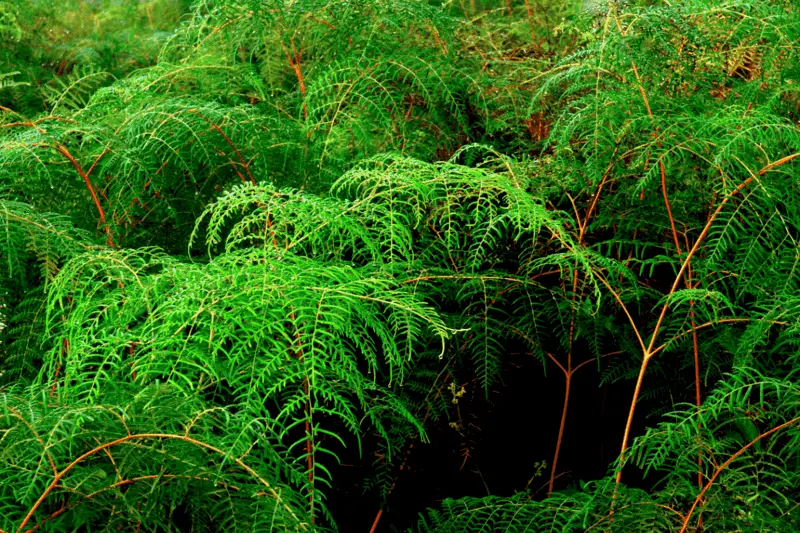
Bracken ferns are a common household plant but should never be used in your pet’s terrarium. They are quite toxic and have been known to cause cancer in animals. Other common symptoms are blindness, heart failure, and death. As Bracken poisoning is essentially untreatable, the best prevention method is to avoid it altogether.
4. Castor Bean (Ricinus communis)
The Castor bean plant is the source of one of the most poisonous substances currently known. The seeds from the castor bean plant produce the ricin toxin which is lethal to humans and animals alike. Vomiting and diarrhea are common symptoms if your pet is lucky enough to have survived for more than 3-5 days after ingestion. The plant is also known to cause dermatitis.
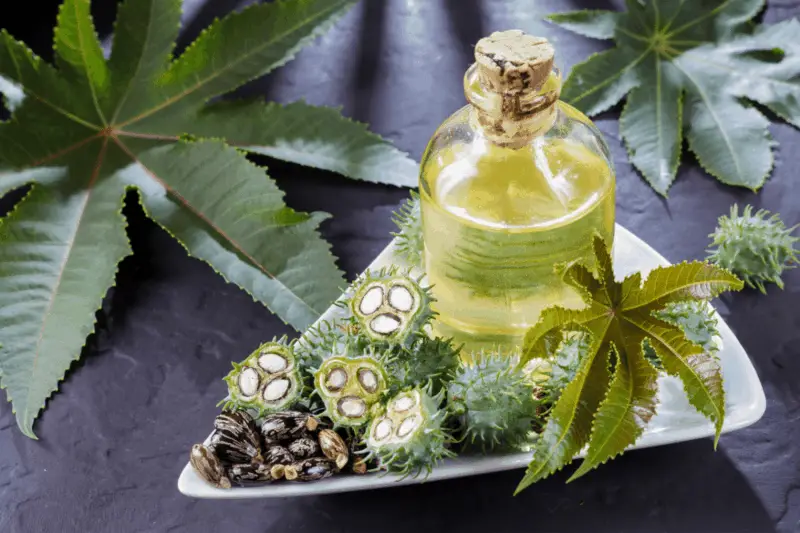
Due to the dangerous nature of this plant, it is advised to not even have the castor bean plant in your garden or around the house if you have children in the home. Even though the seeds are the most toxic part of the plant, poisoning can still occur through ingestion of the leaves.
5. Dumb Cane (Dieffenbachia)
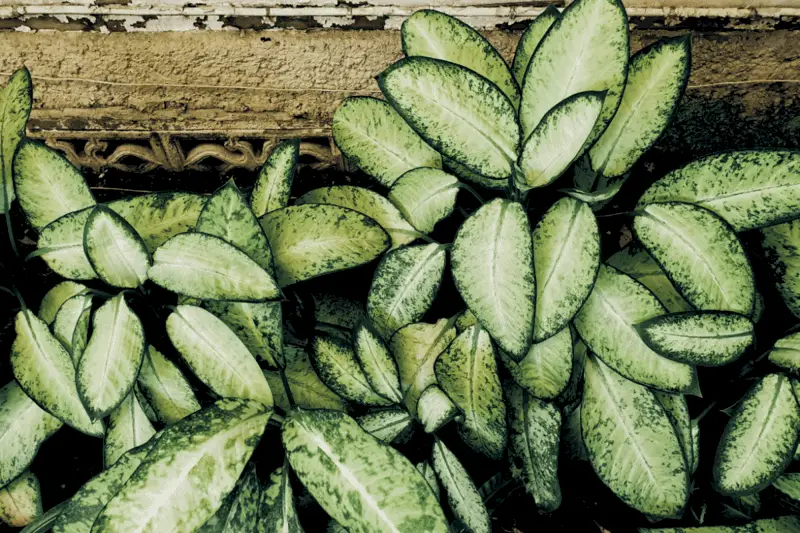
The dumb cane plant gets its name from the effects of its poison. The poison on its leaves/foliage causes swelling, and when ingested, the swelling is so bad that the victim is unable to speak. Other common symptoms are an upset Stomach, oral Irritation, asphyxiation, tremors, Seizures, loss of Balance, and possibly death.
6. Holiday Favorites (Holly, Mistletoe, Poinsettia)
If your one to get into the holiday spirit, be sure to keep these plants out of your reptile’s terrarium and away from any areas where your pet may explore.
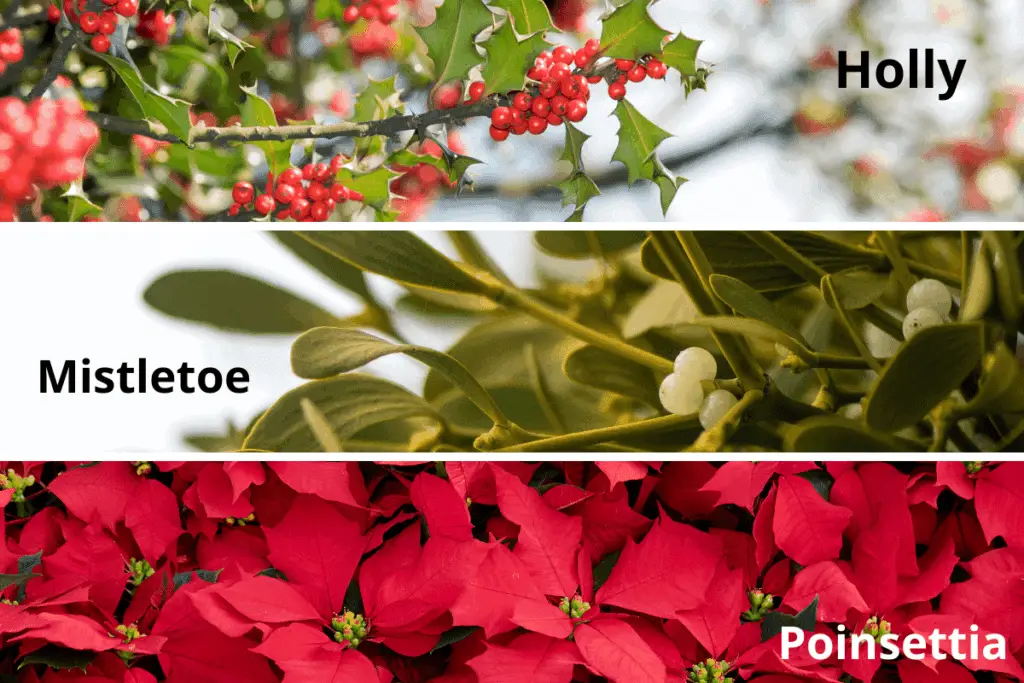
Holly is a beautiful holiday decoration, but the berries are poisonous to humans and animals. Common symptoms include vomiting, diarrhea, drooling, lip smacking, and head shaking. The leaves of the plant may also be harmful to smaller reptiles due to their spiky edges.
Mistletoe is often called the plant of love and is a common holiday tradition. However, the plant is quite toxic to reptiles and can cause vomiting, diarrhea, labored breathing, shock, and even death. Ingesting small amounts of the berries or leaves are unlikely to cause serious poisoning but it is still recommended to be kept away from your pets.
Poinsettias are a very common plant during the Christmas season as they reach full bloom in December. Their bright, red petals are actually leaves and combined with its green foliage, provide the perfect holiday display. Poinsettias are only mildly toxic and can cause mild drooling, licking lips, vomiting, diarrhea, skin irritation and eye irritation. Symptoms can be caused through ingestion or physical contact with the plant’s milky sap.
7. Jimsonweed (Datura stramonium)
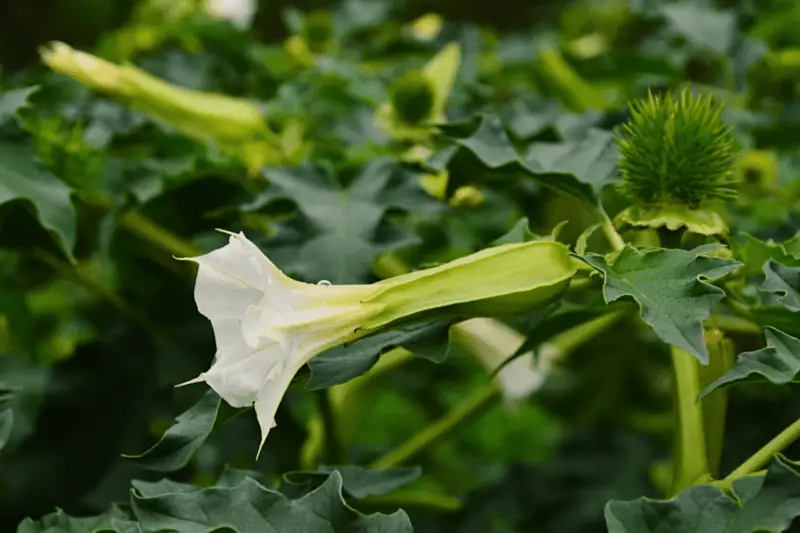
The entire Jimsonweed plant is toxic and can cause harmful effects if consumed. Common symptoms are abnormal thirst, distorted sight, delirium, incoherence, hallucination, hyperthermia, and bizarre behavior. Jimsonweed is best known for being used by adolescents for its hallucination effects and can be found along roadsides, gardens, valleys, and backyards.
8. Lily (Lilium)
There are many different species of lilies and most of them are toxic to reptiles. The entire plant is toxic, and your pet can even be poisoned just by drinking water surrounding the plant. The most common symptoms are vomiting, diarrhea, and mental confusion. Dermatitis and skin irritation can also occur during contact.
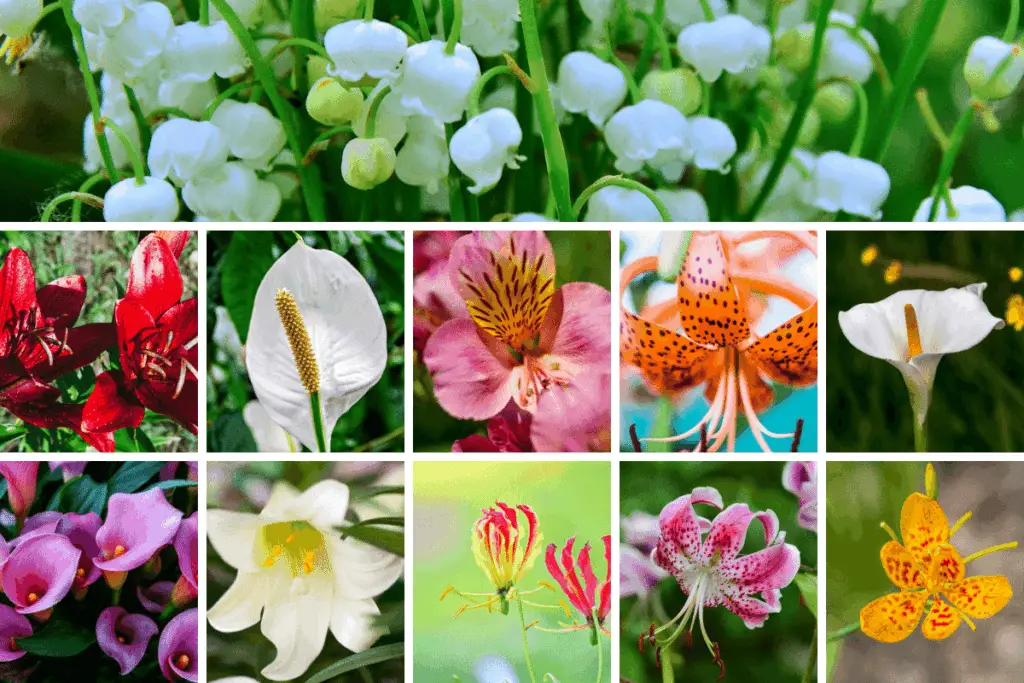
Common lily species to be aware of are Lily of the Valley, Oriental Lily, Peace Lily, Peruvian Lily, Tiger Lily, Arum Lily, Calla Lily, Easter Lily, Glory Lily, Japanese Show Lily, and Leopard Lily.
9. Marijuana (Cannabis)
There are a few ways that that the Cannabis plant can be harmful to reptiles. Marijuana poisoning can occur through smoke inhalation, ingesting THC edibles, or ingesting the plant itself.
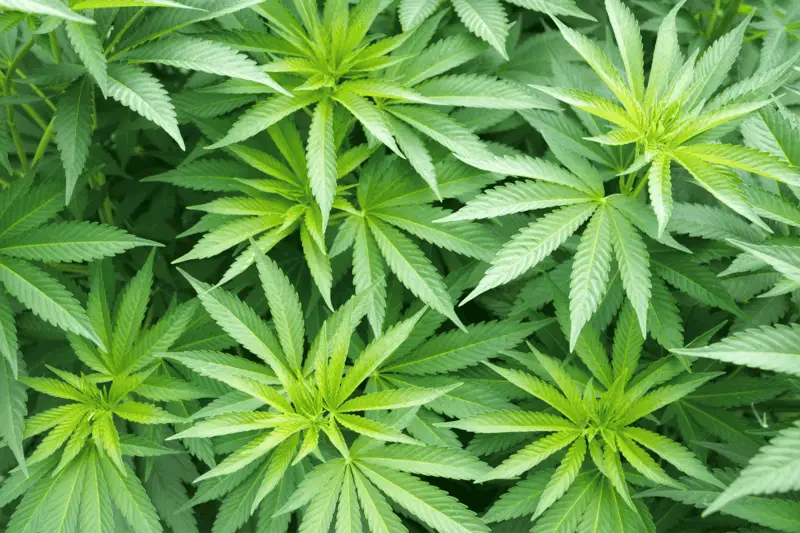
As reptiles’ lungs are not as developed as mammals, smoke inhalation can be quite harmful. You should never purposefully breathe Marijuana smoke, or any smoke for that matter, directly into your reptile’s enclosure or vicinity.
Symptoms to look out for are increased stress, sedation/lethargy, dilated pupils or glassed over eyes, dazed expression, difficulty walking and vomiting, low or high heart rate, vocalization such as whining or crying, agitation, trouble regulating temperature causing the body temperature to drop or rise and incontinence/dribbling urine, tremors, seizures and potentially a coma if ingested.
10. Mushrooms (Fungi)
Although there may be some non-toxic species of mushrooms, there are many toxic species that can be harmful to your reptiles. Misidentification is the leading cause of mushroom poisoning in humans so trying to identify which species are safe for your pet is a risky endeavor.
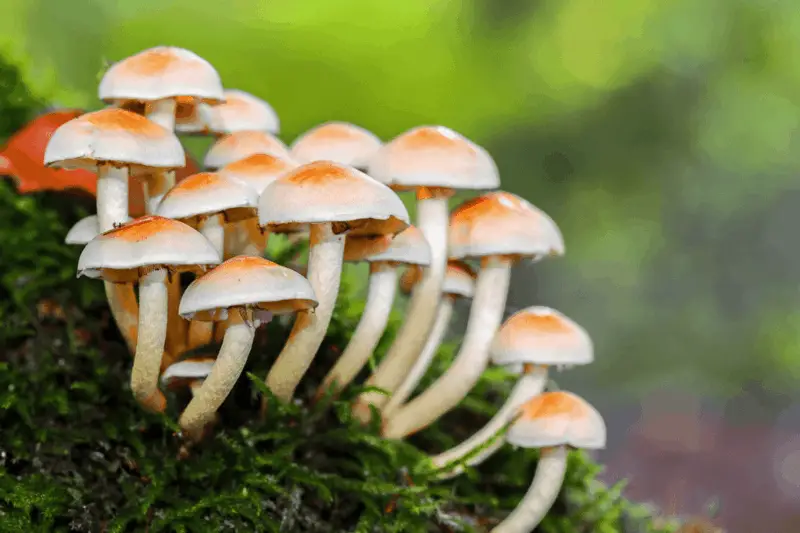
Common toxic mushrooms to be aware of are Amanita phalloides, Inocybe, Amanita muscaria, Amanita pantherina, Clitocybe, and Scleroderma citrinum.
11. Nightshade (Solanaceae)
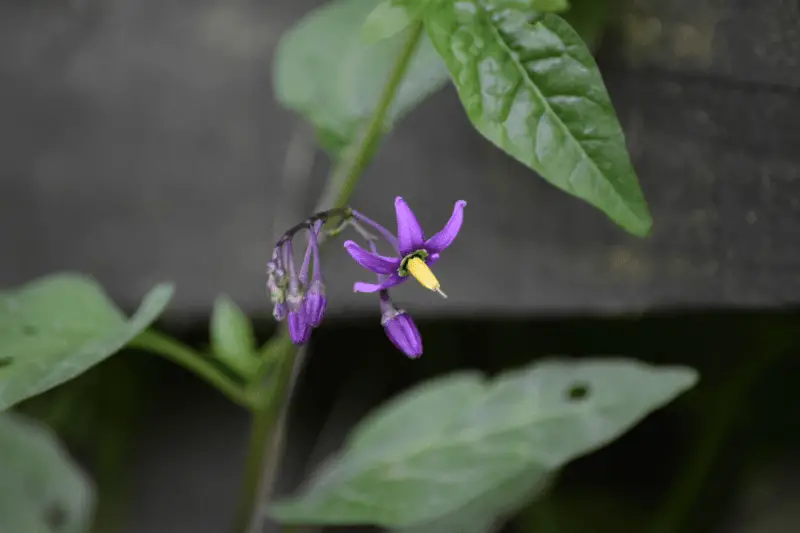
There are a variety of nightshade species that have varied levels of toxicity. The plant foliage and berries can be extremely poisonous if ingested and can cause intense digestive disturbances and hallucinations.
12. Oleander (Nerium oleander)
Oleander contains two extremely toxic components, oleandroside and nerioside. These dangerous toxins exist in the entire plant, from the leaves and branches, to the seeds and flowers. Ingestion of Oleander can be fatal and simply touching the plant can cause skin irritation.
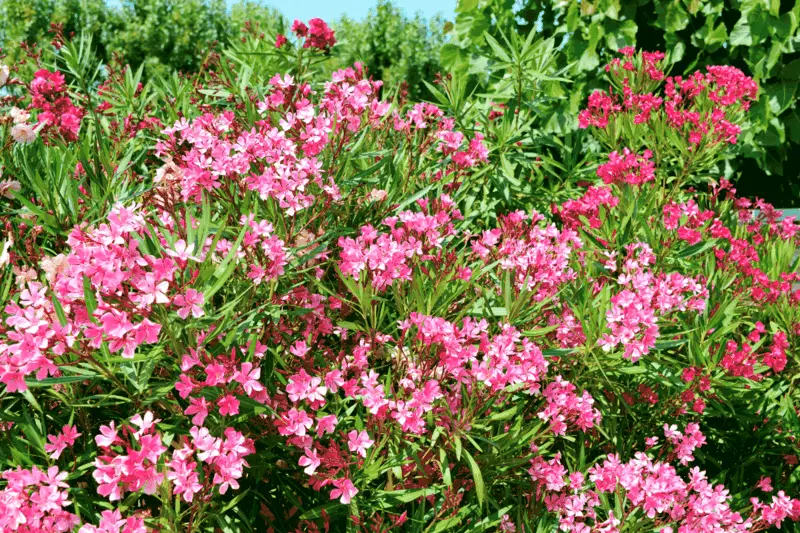
Common symptoms are colic, sweating, incoordination, difficulty breathing or shallow breathing, muscle tremors, and diarrhea.
13. Primrose (Primula vulgaris)
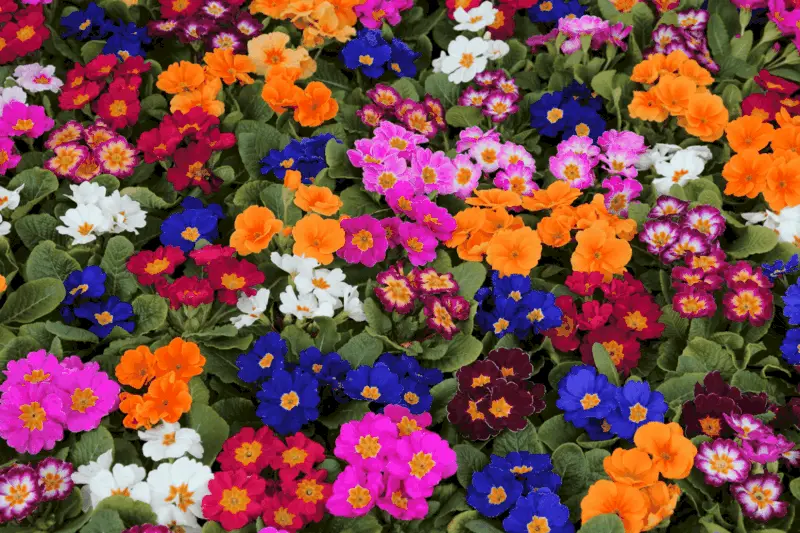
The leaves of the Primrose plant are covered with small hairs that discharge toxins. If touched, your reptile is likely to experience immediate irritation and could develop painful blisters or dermatitis. Other symptoms if the plant is ingested are mild vomiting and digestive problems.
14. Shamrock (Trifolium dubium)
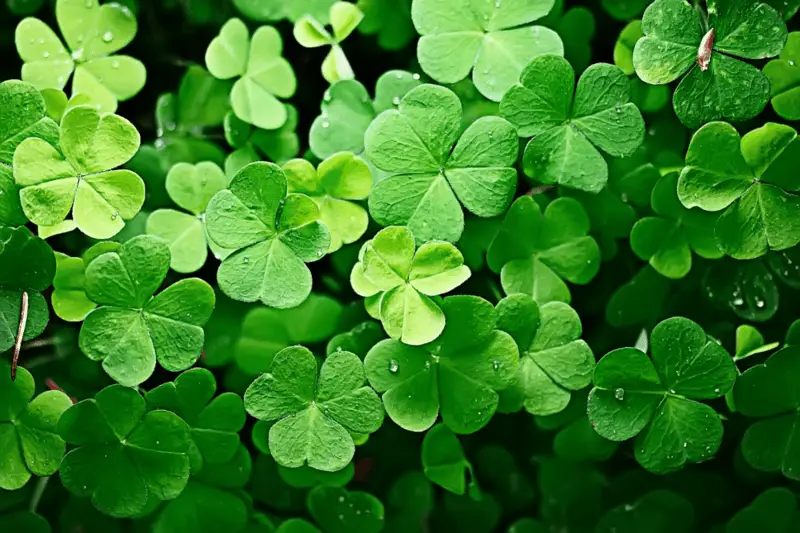
The Shamrock is commonly known as the symbol of Ireland. But don’t let the luck of the Irish fool you, this plant can be quite harmful to your pet if ingested. Soluble calcium oxalates are present in varying degrees in the entire plant and can cause drooling, vomiting, lethargy, weakness, tremors, bloody urine, and diarrhea.
15. Yews (Taxus)
The bark, leaves, red berries, and seeds of Yews contain a toxin called taxine which can be quite harmful if ingested. The Florida Yew, English Yew, Japanese Yew, Pacific Yew, and Ground Hemlock are all varieties of the Yew species which contain taxine and can cause Yew poisoning.
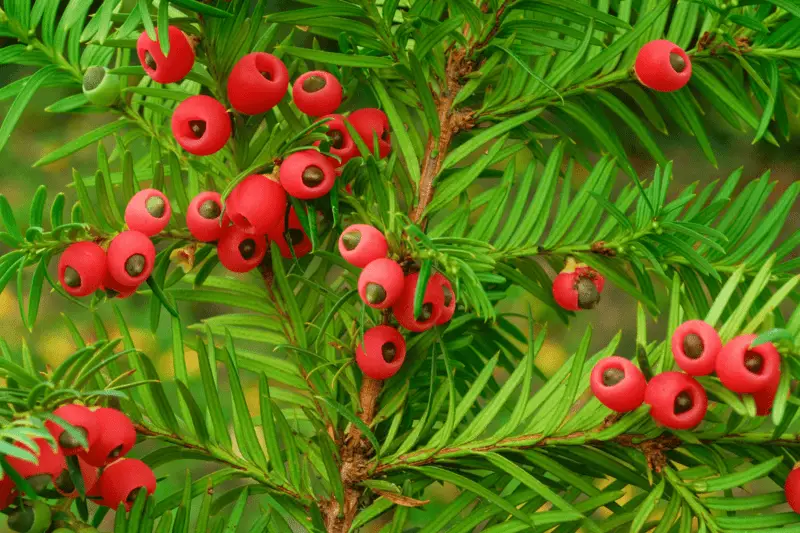
Common symptoms include drooling, vomiting, weakness, difficulty breathing, dilated pupils, tremors, seizures, and potentially death.
Final Thoughts
The safety of your reptile should be your top priority so it is extremely important to understand which plants can be harmful to your pet. Not only is it important not to include toxic plants in your reptile’s terrarium, but it is also important to make sure you keep these plants away from any areas that your reptile may explore or have access to.
If you are interested in a collection of plants that are safe for reptiles and their terrariums, see our article on safe plants for reptiles covering over 135 different options.
If you think your pet may have ingested a potentially poisonous substance, visit ASPCA Animal Poison Control or call them at (888) 426-4435 for a consultation.
Bonus Toxic Plant List
The below list is a compilation of the research I have performed regarding toxic plants for reptiles.
| NAME | TOXIC PARTS | SYMPTOMS |
| Aconite | All | Nausea and vomiting |
| Air Plant | ||
| Allamanda | bark, leaves, fruit, seeds, sap | plant contains cathartic toxins |
| Alsike Clover (trifolium hybridum) | whole plant | |
| Amanita | ||
| Amaranthus | plant may contain toxic levels of nitrates | |
| Amaryllis | Bulb, stem, flower parts | |
| Amaryllis | Bulbs | Upset Stomach, Hyperactivity Lethargy Coma, Shock |
| Andromeda | ||
| Anemone | All parts | gastrointestinal tract affected by the toxin protoanemonin; plant also causes dermatiti |
| Angel Trumpet Tree | All Parts | |
| Angels’ trumpets | Toxic if eaten | nausea and vomiting |
| Apple leaf croton | Whole plant very toxic | Could be fatal – due to ricin – hemorrhages of the heart, degradation of the kidneys and liver and intense inflammation and erosion of intestinal membranes |
| Apple pips | seeds | |
| Apple seeds & | seeds | Varied Toxic Effects. The plant is cyanogenic |
| Apricot Kernel | Kernels contain cyanide. | Children have died from eating too many kernels! |
| Arborvitae | Harmful if eaten in quantity | May cause a skin allergy |
| Arnica | rhizomes, flowers | |
| Arrowgrass | Leaves | |
| Arum lily | ||
| Asparagus fern | Contains a wide variety of poisons resulting in a bewildering range of symptoms. | |
| Autumn crocus | bulbs and entire plant | vomiting, nervous excitement. Plant can cause dermatitis |
| Avocado (Persea americana) | fruit, pith, and stems | diarrhoea, vomiting, laboured breathing, |
| Azalea | entire plant | nausea, vomiting, depression, difficulty breathing and coma |
| Balsam pear | ||
| Baneberry | foliage, berries, roots | gastrointestinal tract and nervous system affected by the toxin protoanemonin. |
| Baneberry | Foliage, fruits | |
| Barilla | leaves and stems | plant contains soluble oxalates |
| Belladonna | Entire plant | |
| Benweed (Senecio jacobaea) | See Ragwort | See Ragwort |
| Betel Nut | Entire plant | |
| Bird of paradise | seeds | gastrointestinal tract affected by the plant toxins |
| Bishops Weed | ||
| Bittersweet | Entire plant | The plant is reputed to be toxic |
| Black laurel | ||
| Black locust | Bark, sprouts, and foliage | |
| Black Locust (Robinia pseudoacacia) | All parts of the tree, except the flowers – the bark is considered the most toxic | staggering, paralysis, – mainly affecting horses, cattle sheep and poultry |
| Black Walnut | entire | Harmful if eaten in quantity. Can cause temporary paralysis |
| Bleeding Heart | foliage, roots, | Poisonous in large amounts, contains convulsant including isoquinoline. Plant also causes dermatitis |
| Blighia sapida | arils in immature fruit | gastrointestinal tract and nervous system affected by toxins. |
| Bloodroot | All parts | |
| Blue bell | Harmful if eaten in quantity | |
| Bluebonnet | ||
| Blue-green algae | ||
| Boston Ivy | All parts | |
| Boxwood | entire plant | Upset Stomach, Heart Failure, Excitability or Lethargy. Plant also causes dermatitis |
| Bracken fern | ||
| Branching ivy | berries and leaves | gastrointestinal tract affected by saponins. Dermatitis |
| British Manrake | See White Bryony | See White Bryony |
| Broomcorn grass | ||
| bryonia dioica | ||
| Buckeye | Sprouts and nuts | |
| Buckeyes (Aesculus hippocastanum) | Nuts, immature growths | Gastrointestinal tract affected by saponins |
| Buckthorn | Harmful if eaten in quantity | |
| Bulb flowers | ||
| Burdock | ||
| Burning Bush | Toxic if eaten | Nausea and vomiting. May cause a skin allergy. |
| Bushman’s Poison | seeds | cardiovascular system affected by cardiac glycosides |
| Buttercup (Ranunculus ) | entire plant | juice may severely injure digestive system. Plant also causes dermatitis |
| Cacao | ||
| Caladium | All parts | Upset Stomach, Oral Irritation, Asphyxiation, Tremors, Seizures, Loss of Balance |
| Caladium | All parts | |
| Calico Bush | Toxic if eaten | Nausea and vomiting. May cause a skin allergy. |
| Calla lily | Leaves | Upset Stomach, Oral Irritation, Asphyxiation, Tremors, Seizures, Loss of Balance |
| Camel bush | ||
| Canario | ||
| Candelabra tree | ||
| Candleberry | All Parts | gastrointestinal tract affected by saponins and toxalbumins. |
| Cannabis (cannabis sativa) | the whole plant – in all forms – it has a bitter taste and so generally avoided by animals | muscular weakness, salivation, vomiting, drowsiness – not generally fatal |
| Cardinal flower | ||
| Careless Weed | plant may contain toxic levels of nitrates | |
| Castor bean (Ricinus communis) | Entire Plant. Highly toxic seeds contain toxalbumins. | A single Rosary Pea or one to two Castor Bean seeds can cause death. Plant also causes dermatitis |
| Catclaw | foliage | |
| Chalice | ||
| Charming dieffenbachia | mainly from the sap or the water that cutting were in | Repeated vomiting and diarrhoea – recover after three days- |
| Cherry | Kernels | plant is cyanogenic |
| Cherry Laurel | Foliage and flowers | Harmful if eaten in quantity |
| Cherry tree | Berries | |
| Chinaberry tree | ||
| Chinese Lantern (Solanum ) | See Nightshade | See Nightshade |
| Chives | bulbs, bulblets, flowers, stems | gastrointestinal tract affected by plant toxins. |
| Choke Cherry (Prunus virginiana) | Leaves, seed pits, stems, bark | |
| Christmas candle | ||
| Christmas Cherry (Solanum ) | See Nightshade | See Nightshade |
| Christmas rose | entire plant | Upset Stomach, Diarrhoea, Seizures, Disorientation. Cardiovascular system affected by the cardiac glycosides helleborin and helleborein. Plant also causes dermatitis |
| Chrysanthemum | Leaves and stems | May cause a rash after contact. May cause dermatitis |
| Clematis | Entire plant | gastrointestinal tract and nervous system affected by plant toxins. Plant also causes dermatitis |
| Cocklebur (Xanthium strumarium) | ||
| Coffee/ Coffee bean | ||
| Colombine | Foliage, flowers, seeds | Harmful if eaten in quantity |
| Common Nettle (urtica dioica) | See Stinging Nettle | See Stinging nettle |
| Common St. Johns Wort (hypericum perforatum) | See St. Johns Wort | See St Johns Wort |
| Common Stonecrop (sedum acre) | the whole plant | if eaten in large quantities – salivation, muscle tremors, rapid respiration and coma |
| Coral plant | All parts | |
| Cordatum | ||
| Corn cockle / Purple cockle | Harmful if eaten in quantity | |
| Cotton bush | ||
| Cowslip | ||
| Coyotillo | ||
| Crab’s Eye | seeds | gastrointestinal tract affected by toxalbumins. |
| Creeping Charlie (Glecoma hederacea ) | All parts | Sweating, drooling, usually not fata |
| Crown of thorns | ||
| Cuckoo pint | Nausea and vomiting. May cause a skin allergy. | |
| Cutleaf philodendron | The whole plant | causes diarrhoea upon ingestion. Also causes dermatitis when touched. Causes burning sensation in mouth when eaten |
| Cyclamen | Flowers | induced vomiting – skin reaction |
| Daffodil (Narcissus ) | bulbs | nausea, vomiting, diarrhoea caused by the alkaloid toxins. Plant also causes dermatitis |
| Daphne | berries and seeds, but also entire plant | gastrointestinal tract and kidneys affected by coumarin glycosides. Plant also causes dermatitis |
| Datura | ||
| Deadly amanita | ||
| Deadly Nightshade (Solanum ) | See Nightshade | See Nightshade |
| Death camus | ||
| Delphinium (Delphinium ) | Harmful if eaten in quantity | |
| Dendrathema | May cause a skin allergy | |
| Desert Rose | The whole plant | cardiovascular system affected by digitalis-like glycosides. |
| Devils figs | Harmful if eaten in quantity | |
| dicentra spectabilis | ||
| Dogbane | leaves | plant contains cardiac glycosides |
| Doll’s Eye | ||
| Dracaena palm | ||
| Dumb cane (dieffenbachia) | Foliage | Upset Stomach, Oral Irritation, Asphyxiation, Tremors, Seizures, Loss of Balance, Death |
| Dutchman Breechs (Dicentra) | See Bleeding Heart | See Bleeding Heart |
| Dwarf Bay | See Mezereon | See Mezereon |
| Dwarf Morning glory | Harmful if eaten in quantity | |
| Easter lily | ||
| Echium | May cause a skin allergy | |
| Eggplant | Foliage only | |
| Elderberry (Sambucus canadensis ) | shoots, bark, and leaves. Entire plant. | nausea and vomiting. Plant is cyanogenic and may contain toxic levels of nitrates. |
| Elephant ears | all parts | intense burning, irritation and swelling of the mouth and throat. Death can occur is tongue swells enough to block air passage |
| English ivy (Hedera helix ) | berries and leaves | gastrointestinal tract affected by saponins. Plant also causes dermatitis |
| Ergot (Claviceps purpurea) | Causes abortions in humans and sheep – suggestions it would do the same in dogs. | |
| Eucalyptus | ||
| Euonymus (spindle tree) | ||
| European spindle | Harmful if eaten in quantity | |
| Exotica perfection dieffenbachia | mainly from the sap or the water that cutting were in | Repeated vomiting and diarrhoea – recover after three days |
| False Acacia (Robinia pseudoacacia) | See Black Locust | See Black Locust |
| False Hellebore (False henbane) | All parts | Nausea and vomiting. |
| Felt plant | ||
| Fescue (Festuca arundinaceae) | ||
| Fiddleneck | seed-like nutlets | |
| Figs Ficus | ||
| Firethorn | ||
| Flame tree | ||
| Flannel flower | Harmful if eaten in quantity | |
| Flax | Harmful if eaten in quantity | |
| Fly-Poison | leaves, underground parts of plant | |
| Fool’s Parsley | Entrie Plant | gastrointestinal tract affected by alkaloid toxins. |
| Four O’Clock | All parts | |
| Foxglove (Digitalis purpurea ) | Entire plant | cardiovascular system affected by the glycosides digitalin and digitoxin. Gastrointestinal tract affected by saponins |
| Fruit salad plant (philodendron) | The whole plant | causes diarrhoea upon ingestion. Also causes dermatitis when touched. Causes burning sensation in mouth when eaten |
| Garlic | ||
| Gaultheria | Harmful if eaten in quantity | |
| Geranium | Mild dermatitis | |
| German ivy | berries and leaves | gastrointestinal tract affected by saponins. Plant also causes dermatitis |
| German primula | Nausea and vomiting. May cause a skin allergy. | |
| Ghostweed | ||
| Giant dumb cane | mainly from the sap or the water that cutting were in | Repeated vomiting and diarrhoea – recover after three days- |
| Glacier ivy | berries and leaves | gastrointestinal tract affected by saponins. Plant also causes dermatitis |
| Glory Lily | causing nausea and vomiting | |
| Glottidium | ||
| Gold dieffenbachia | mainly from the sap or the water that cutting were in | Repeated vomiting and diarrhoea – recover after three days |
| Golden chain Grass | Seeds and pods | |
| Golden chain tree | entire plant especially bean-like capsules in which seeds are suspended | excitement, staggering, convulsions and coma. Nervous system affected by the alkaloid cytisine |
| Golden Trumpet Vine | ||
| Goldenrots | leaves | |
| Granny’s bonnets | Harmful if eaten in quantity | |
| Greater Burdock (Arctium lappa) | burs | Symptoms burs to coats of dogs cause skin irritation – dogs remove burrs by licking – hooked scales penetrate the mucous membrane of mouth and tongue – ulceration, oral discomfort, salivation |
| Green Dragon | All Parts | |
| Ground cherry | ||
| Hahn’s self-branching English ivy | berries and leaves | gastrointestinal tract affected by saponins. Plant also causes dermatitis |
| Heliotrope | ||
| Hemlock, Water (Cicuta maculata ) | All parts, root and root stalk | Dilated pupils, frothing at the mouth, spasms muscles spasms, restlessness, convulsions, and death (within 15 min to 2 hours) |
| Hemp (Cannabis sativa ) | See Cannabis | See Cannabis |
| Henbane | Toxic if eaten | Nausea and vomiting. |
| Holly | Berries | Upset Stomach, Tremors, Seizures, Loss of Balance |
| Honeysuckle (lonicera periclymenum) | plants and berries | vomiting, diarrhoea and lethargy |
| Horse chestnut (Aesculus hippocastanum) | All parts | Harmful if eaten in quantity |
| Horse head philodendron | The whole plant | causes diarrhoea upon ingestion. Also causes dermatitis when touched. Causes burning sensation in mouth when eaten |
| Horse tail (Equisetaceace) | the complete weed | mainly affects horses and to a lesser cattle |
| Horsetail | All parts | |
| Hurricane plant | bulb | Varied Toxic Effects |
| Hyacinth (Hyacinth orientalis) | bulb | gastrointestinal tract affected by alkaloid toxins, Plant also causes dermatitis |
| Hydrangea (Hydrangea ) | Leaves, buds | Irritation and inflammation of the digestive tract, diarrhea, bloody stoo |
| Indian Hemp | plant contains cardiac glycosides | |
| Indian rubber plant | ||
| Indian Turnip | All Parts | |
| Iris | tubers | severe digestive upset. gastrointestinal tract affected by the glycoside iridin. plant also causes dermatitis |
| Italian Arum | All Parts | |
| Ivy (araliaceae) | whole plant | vomiting, diarrhoea, excitement, muscular spasms, paralysis |
| Jack in the Pulpit (Arisaema ) | entire plant | contains small crystals of calcium oxalate, causes burning to the mouth, can cause hallucinations |
| Japanese show lily | especially poisonous to cats | |
| Japanese Spindle | Harmful if eaten in quantity | |
| Jasmine | berries and sap | Digestive disturbance. gastrointestinal tract affected by solanine glycoalkaloids. The nervous system affected by atropine-like toxins |
| Jerusalem cherry (Solanum pseudocapsicum) | immature growths. | gastrointestinal tract affected by solanine glycoalkaloids. may contain toxic levels of nitrates. plant may also cause dermatitis |
| Jimmy Weed | leaves | |
| Jimsonweed (Datura stramonium ) | entire plant | abnormal thirst, distorted sight, delirium, incoherence, coma caused by the alkaloids atropine, scopolamine and hyoscyamine. May contain toxic levels of nitrates. |
| Johnsongrass | All parts | |
| Jonquil | Bulbs | |
| Juniper | ||
| Kalmia | ||
| Kingcup | Harmful if eaten in quantity | |
| Lacy tree philodendron | The whole plant | causes diarrhoea upon ingestion. Also causes dermatitis when touched. Causes burning sensation in mouth when eaten |
| Lantana | ||
| Larkspur | young plants and seeds | digestive upset, nervousness, depression. Cardiovascular system affected by alkaloids including delphinine. Plant also causes dermatitis |
| Latana (Lantana camara ) | green berries (immature) | affects lungs, heart, kidneys and nervous system, affected by lantodene, an atropine-like toxin. Plant is also hepatogenic |
| Laurel | All parts | Harmful if eaten in quantity |
| Lechuguilla | ||
| Lenton rose | Harmful if eaten in quantity | |
| Leopard lily | Nausea and vomiting. May cause a skin allergy. | |
| Lesser Hemlock | All Parts | gastrointestinal tract affected by alkaloid toxins. |
| Leyland cypress | May cause a skin allergy | |
| Lily of the valley (Convallaria majalis) | entire plant | irregular heart beat and pulse accompanied by digestive upset and mental confusion caused by the glycosides convallarin and convallamarin |
| Lima bean | ||
| Lobelia tupa | May cause a skin allergy | |
| Locoweeds | Entire plant | |
| Locust | bark, sprouts, foliage | nausea and weakness |
| Lords and ladies | ||
| Lupine (Lupinus ) | seeds and pods, foliage | |
| Malanga | ||
| Mallow | Harmful if eaten in quantity | |
| Mandrake | Roots, foliage, unripe fruit | |
| Marble queen | ||
| Marijuana | leaves and flower bracts | plant contains the hallucinogens tetrahydro-cannabinols |
| Marsh Marigold | Harmful if eaten in quantity | |
| Maternity plant | ||
| May apple (Podophyllum peltatum ) | apple, roots, foliage | severe diarrhoea. Contains 16 active toxic agents, mainly in the roots. Nervous system affected by plant toxins, also causes hematological abnormalities. Powdered root may cause conjunctivitis and keratitis |
| Meadow rue | Harmful if eaten in quantity | |
| Meadow Saffron | nausea and vomiting | |
| Mexican breadfruit | (split leaf philodendron) | |
| Mexican Poppy | Entire plant | |
| Mezereon | could prove fatal – lethargy dizziness vomiting diarrhoea | |
| Milkweed (Asclepias syriaca ) | Foliage | May cause a skin allergy |
| Mistletoe | berries, leaves and stems. | gastrointestinal tract affected by toxalbumins. Plant may also cause dermatitis. If ingested a few berries can be fatal to a puppy |
| Mock Azalea | The entire plant | cardiovascular system affected by digitalis-like glycosides. |
| Mock orange | ||
| Monkshood | entire plant especially fleshy roots | digestive upset and nervous excitement. cardiovascular system affected by alkaloid toxins |
| Moonseed | Berries resembles wild grapes, contains a single seed | contains convulsant |
| Morning glory | Foliage, flowers, and seeds | Upset Stomach, Hallucinations |
| Moroccan broom | Harmful if eaten in quantity | |
| Mountain laurel | Harmful if eaten in quantity | |
| Mushrooms | many types | |
| Naked Lady Lilly | See Amaryllis | See Amaryllis |
| Narcissus | bulbs | nausea, vomiting, diarrhoea caused by the alkaloid toxins. Plant also causes dermatitis |
| Navy bean | ||
| Needlepoint ivy | berries and leaves | gastrointestinal tract affected by saponins. Plant also causes dermatitis |
| Nephthytis, Arrowhead Vine | All parts | |
| Nettles | ||
| Nightshade (Solanum ) | entire plant | intense digestive disturbances |
| Oak tree | Foliage and Acorns. Also the bark of the tree. | |
| Oleander (Nerium oleander ) | leaves and branches. Entire plant and the water used for cut plants. | affects the heart, produces severe digestive upset. Extremely poisonous, can cause death. cardiovascular system affected by the glycosides oleandrin, oleandroside and nerioside. Plant may also cause dermatitis |
| Onion | Onions should not be fed to dogs in any form. | Cause anemia. Sometimes Urine becomes red – enlarged kidneys degeneration of liver |
| Oriental lily | (especially poisonous to cats) | |
| Ornamental Pepper (Solanum ) | See Nightshade | See Nightshade |
| Panda plant | ||
| Parlor Ivy | All parts | |
| Paspalum | Sticky material from seeds | dermatitis |
| Pasque flower | Harmful if eaten in quantity | |
| Peace lily | entire plant | gastrointestinal tract affected by plant toxins. Plant also causes dermatitis |
| Peach | Both the stone and leaf contain cyanide | Plant is cyanogenic |
| Peires | ||
| Pencil cactus | similar to LSD – hallucinogenic | |
| Pencil Tree | ||
| Peony | ||
| Periwinkle | ||
| Peruvian lily | May cause a skin allergy | |
| Peyote | ||
| Pheasant’s eye | All Parts | cardiovascular system affected by cardiac glycosides |
| Philodendron | ||
| Philodendrons | ||
| Pigweed, Redroot (Amaranthus retroflexus) | Leaves, stems, roots. | Troubled breathing, trembling, weakness, coma, death. |
| Pineapple broom | Harmful if eaten in quantity. | |
| Plum | seeds; foliage can be toxic | |
| Poinciana | ||
| Poinsettia | ||
| Poinsettia | leaves stems and sap | Diarrhoea, abdominal cramps, delirium. Sap can cause irritation, and if rubbed in eyes – BLINDNESS. gastrointestinal tract affected by the toxin euphorbin, may contain toxic levels of nitrates. Plant also causes dermatitis |
| Poison Hemlock (Conium maculatum ) | entire plant. (resembles a wild carrot) | nervous system affected by alkaloids including coniine, conidrine and coniceine. May contain toxic levels of nitrates. Plant also causes dermatitis |
| Poison ivy | Leaves, bark and fruit contain a variety of poisons. | may cause dermatitis |
| Poison oak | Leaves, bark and fruit contain a variety of poisons. | may cause dermatitis |
| Poison sumac | Foliage and fruit | Can cause severe blistering dermatitis if they come into contact with skin. |
| Poisonous Primula | Toxic if eaten | Nausea and vomiting. May cause a skin allergy |
| Pokeroot | Toxic if eaten, | causing vomiting and nausea |
| Pokeweed | Toxic if eaten. | Nausea and vomiting |
| Poppy (except California) | All parts | Harmful |
| Potato | Raw foliage and sprouts (“eyes”) | |
| Pothos | The whole plant (Golden pothos/Devil’s Ivy is ok when not eaten. Other pothos species are toxic) | causes diarrhoea upon ingestion. Also causes dermatitis when touched. Causes burning sensation in mouth when eaten |
| Precatory bean | seeds | gastrointestinal tract affected by toxalbumins |
| Prickly Poppy | Entire plant | |
| Primrose (primula) | leaves | Upset Stomach and may cause dermatitis |
| Privet | Berries, foliage | |
| Pyracantha | ||
| Ragwort (Senecio jacobaea) | Entire plant. A common yellow flowered weed found in rough pasture and in some lawns. | Causes kidney failure and liver damage and is irreversible. Minute doses fatal, often wrongly diagnosed. Pyrrolizidine alkaloids cause hepatic veno-occlusive disease (Budd-Chiari syndrome) in humans |
| Rain tree | ||
| Rape | ||
| Rattlebox | ||
| Rattlebush | ||
| Rayless | Leaves | |
| Red Clover (trifolium pratense) | See Alsike Clover | See Alsike clover. Infertile problem with cattle |
| Red maple | ||
| Red Maple | ||
| Red Princess | All parts | |
| Red Sage | Green berries | |
| Red-ink plant | nausea and vomiting | |
| Rhododendron (Rhododendron ) | entire plant | nausea, vomiting, depression, difficulty breathing and coma |
| Rhubarb (Rheum Rhabarbarum) | leaves | large amounts of raw or cooked leaves can cause convulsions, coma and in extreme cases, death |
| Rosary Pea (Ricinus communis ) | See Castor Bean | See Caster Bean |
| Rose periwinkle | Harmful if eaten in quantity | |
| Rosebay | nausea and vomiting | |
| Rue | nausea and vomiting. May cause a skin allergy | |
| Saddle leaf philodendron | The whole plant | causes diarrhoea upon ingestion. Also causes dermatitis when touched. Causes burning sensation in mouth when eaten |
| Sandbox tree | ||
| Satin pothos | The whole plant | causes diarrhoea upon ingestion. Also causes dermatitis when touched. Causes burning sensation in mouth when eaten |
| Savin | Harmful if eaten in quantity | |
| Scarlet runner | ||
| Schefflera | nausea and vomiting. May cause a skin allergy | |
| Senecio | ||
| Shamrock Plant | ||
| Silkweed | Harmful if eaten in quantity | |
| Silver pothos | The whole plant | causes diarrhoea upon ingestion. Also causes dermatitis when touched. Causes burning sensation in mouth when eaten |
| Skunk cabbage | ||
| Snowdrop | ||
| Solomon seal | Harmful if eaten in quantity | |
| Sorghum grass | ||
| Spindle tree | ||
| Spotted dumb cane | mainly from the sap or the water that cutting were in | Repeated vomiting and diarrhoea – recover after three days |
| Spurge Flax | See Mezereon | See Mezereon |
| Spurge Laurel | nausea and vomiting. May cause a skin allergy | |
| Spurge Olive | See Mezereon | See Mezereon |
| Squill | Harmful if eaten in quantity | |
| St James Wort (Senecio jacobaea) | See Ragwort | See Ragwort |
| St Johns Wort (hypericum perforatum) | Complete plant | Symptom lesions develop on un- pigmented areas of skin exposed to sunlight – photosensitization |
| Staggerweed / grass (Senecio jacobaea) | leaves, underground parts of plant | See Ragwort |
| Star of Bethlehem | Foliage and flowering parts | Harmful if eaten in quantity |
| Starflower | Harmful if eaten in quantity | |
| Stinging nettle (urtica dioica) | stinging hairs release active irritant substances into skin | in very extreme cases – trembling, vomiting, difficulty in breathing and weakness |
| Subterranean Clover (trifolium subterranium) | See Alsike Clover | See Alsike Clover |
| Sudan grass | All parts | |
| Sweet Pea | Stems | |
| Sweetheart ivy | berries and leaves | gastrointestinal tract affected by saponins. Plant also causes dermatitis |
| Swiss cheese plant | mainly from the sap or the water that cutting were in | Repeated vomiting and diarrhoea – recover after three days- but not so severe |
| Tansy (Senecio jacobaea) | See Ragwort | See Ragwort |
| Taro vine | The whole plant | causes diarrhoea upon ingestion. Also causes dermatitis when touched. Causes burning sensation in mouth irritated by plant raphides |
| Tarweed | seed-like nutlets | |
| Thorn Apple | See Jimson weed | See Jimson weed |
| Tiger lily | Foliage, flowers, and seed pods | (especially poisonous to cats) |
| Tobacco | ||
| Tomato plant | green fruit, stem, and leaves | |
| Toxicodendron radicans Kuntze | ||
| Tree philodendron | The whole plant | causes diarrhoea upon ingestion. Also causes dermatitis when touched. Causes burning sensation in mouth when eaten |
| Tropic snow dieffenbachia | mainly from the sap or the water that cutting were in | Repeated vomiting and diarrhoea – recover after three days- |
| Tulip (Tulipa ) | foliage, and flowering parts | May cause a skin allergy |
| Tumble Weed | ||
| Variegated philodendron | The whole plant | causes diarrhoea upon ingestion. Also causes dermatitis when touched. Causes burning sensation in mouth when eaten |
| Variegated rubber plant | ||
| Varnish tree | Poisonous. Can cause severe blistering dermatitis if they come into contact with skin. | |
| Virginia bower | ||
| Virginia Cree | ||
| Virginia creeper | ||
| Water Hemlock (Cicuta maculata) | entire plant especially the roots | violent painful convulsions, death caused by the convulsant cicutoxin |
| Wattle | ||
| White Bryony (bryonia dioica) | mainly the roots – worse toxic when dried | possible increase in body temp rapid respiratory and heart rates |
| White cedar | ||
| White Clover (trifolium repens) | See Alsike Clover | See Alsike Clover. Can suffer cyanide poisoning |
| Whorled Butterfly | Leaves | |
| Wild Cherry tree | twigs and foliage | gasping, excitement, prostration. Contains a compound that releases cyanide when eaten |
| Wild Pepper | See Mezereon | See Mezereon |
| Wildflower | All Parts | |
| Wintersweet | ||
| Wisteria | Foliage, seeds, and pods | |
| Wisteria | seeds, pods and entire plant | digestive upset caused by alkaloid toxins. Nausea, repeated vomiting, stomach pains, severe diarrhoea, dehydration and collapse |
| Wolfs bane | nausea and vomiting | |
| Woody Nightshade | nausea and vomiting | |
| Yam bean | ||
| Yellow Allamanda | ||
| Yellow jasmine | ||
| Yew | berries, foliage | digestive disturbance. Dizziness, dry mouth and mydriasis develop within one hour, followed by abdominal cramping, salivation and vomiting. Foliage is more fatal than berries, death can be sudden without warning or symptoms |

Meet Brad, the creator behind Vivarium Vibes, where his deep connection with nature and animals truly comes to life.
